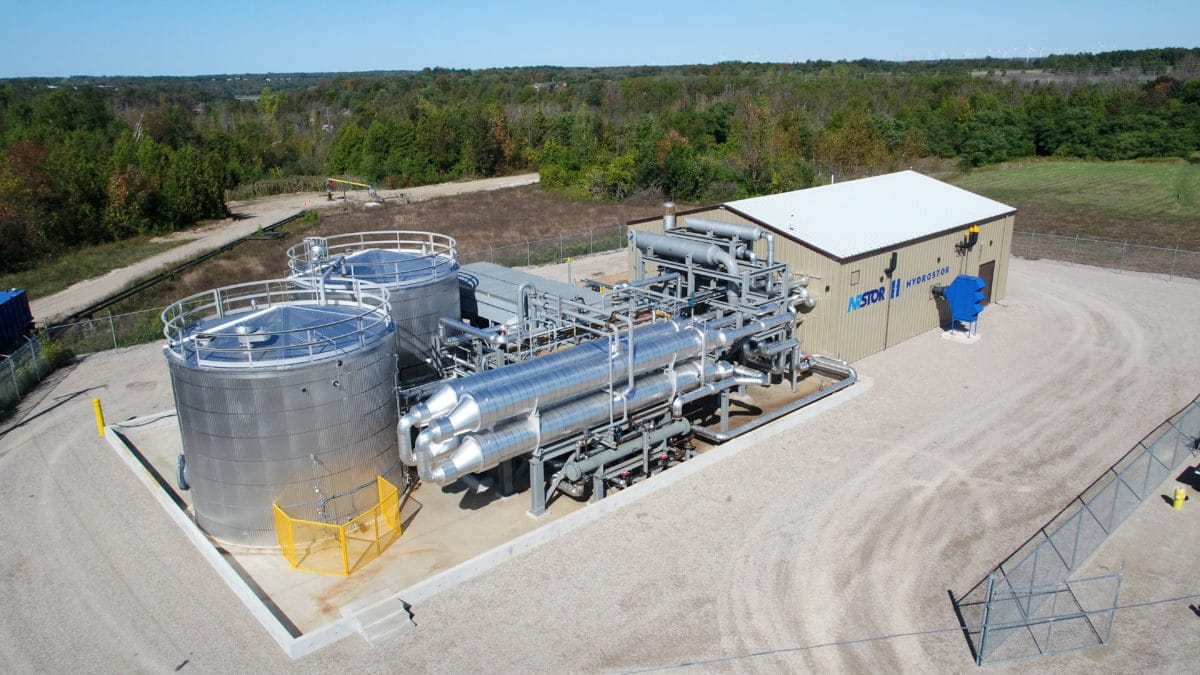Hydrostor, a Canadian long-duration energy storage solution provider, received C$4 million ($3.19 million) from Natural Resources Canada’s Energy Innovation Program and Sustainable Development Technology Canada to pursue its development of a 300-500 MW Advanced Compressed Air Energy Storage (A-CAES) facility.
The money will be used to complete essential engineering and planning, eventually enabling Hydrostor to move toward construction. The project will be modeled on Hydrostor’s commercially operating Goderich storage facility and would provide up to 12 hours of long-duration energy storage.
The Goderich A-CAES facility is in Ontario and is contracted by Ontario’s Independent Electricity System Operator for peaking capacity, ancillary services, and full participation in the merchant energy market. The facility has a 1.75 MW peak output, 2.20 MW charge rating, and up to 15 MWh of storage capacity.
“Hydrostor has a variety of projects under development, as well as a pipeline of large-scale A-CAES projects representing over 6 GW and over 65 GWh of deployment potential in the USA, Canada, Chile and Australia, with significant global project potential across many other markets,” a company spokesperson told pv magazine, adding that the capex range for similar projects is between $175 and $250/kWh. “Additional cost reductions are possible today where infrastructure can be repurposed plus additional reductions in technology over time.”
The company explained that its technology utilizes renewable energy or excess grid energy to compress air, which is then funnelled into underground caverns, displacing water and creating storage capacity. Hydrostatic compensation is used to maintain the system at a constant pressure during operation.
The heat created by this process is stored and then used to reheat the compressed air when energy is needed. This adiabatic process is claimed to increase overall efficiency and eliminate the need for fossil fuels during operation. The hydrostatic pressure pushes the compressed air to the surface, where it is then recombined with the stored heat and expanded through a turbine to generate electricity on demand.
“Hydrostor's key breakthroughs rest in our adiabatic thermal management system, which eliminates the need for natural gas, and our purpose-built underground storage caverns, which permit siting flexibility by simply using water and gravity to cost-effectively increase energy density and system size,” the spokesperson further explained.
The Canadian company is also developing the Rosamond A-CAES Project in California, northeast of Los Angeles. That project will provide 500 MW of on-demand peaking capacity for 12 hours of duration once it becomes operational in 2024. “The proposed facility will provide 500 MW of capacity, turning California’s growing solar and wind resources into on-demand peaking capacity while allowing for the closure of emitting fossil fuel generating stations and maximizing transmission system utilization,” the company said.
This content is protected by copyright and may not be reused. If you want to cooperate with us and would like to reuse some of our content, please contact: editors@pv-magazine.com.





2 comments
By submitting this form you agree to pv magazine using your data for the purposes of publishing your comment.
Your personal data will only be disclosed or otherwise transmitted to third parties for the purposes of spam filtering or if this is necessary for technical maintenance of the website. Any other transfer to third parties will not take place unless this is justified on the basis of applicable data protection regulations or if pv magazine is legally obliged to do so.
You may revoke this consent at any time with effect for the future, in which case your personal data will be deleted immediately. Otherwise, your data will be deleted if pv magazine has processed your request or the purpose of data storage is fulfilled.
Further information on data privacy can be found in our Data Protection Policy.